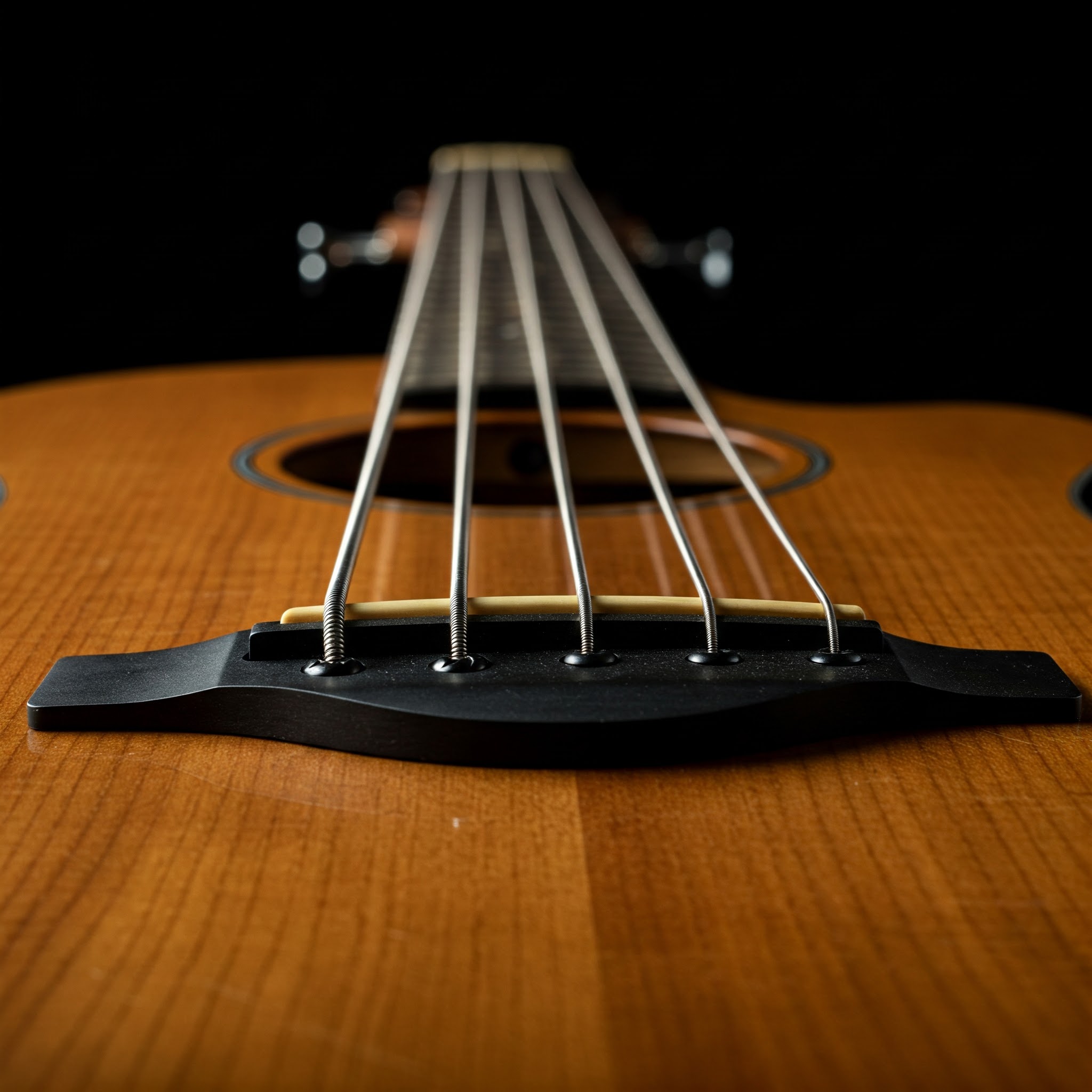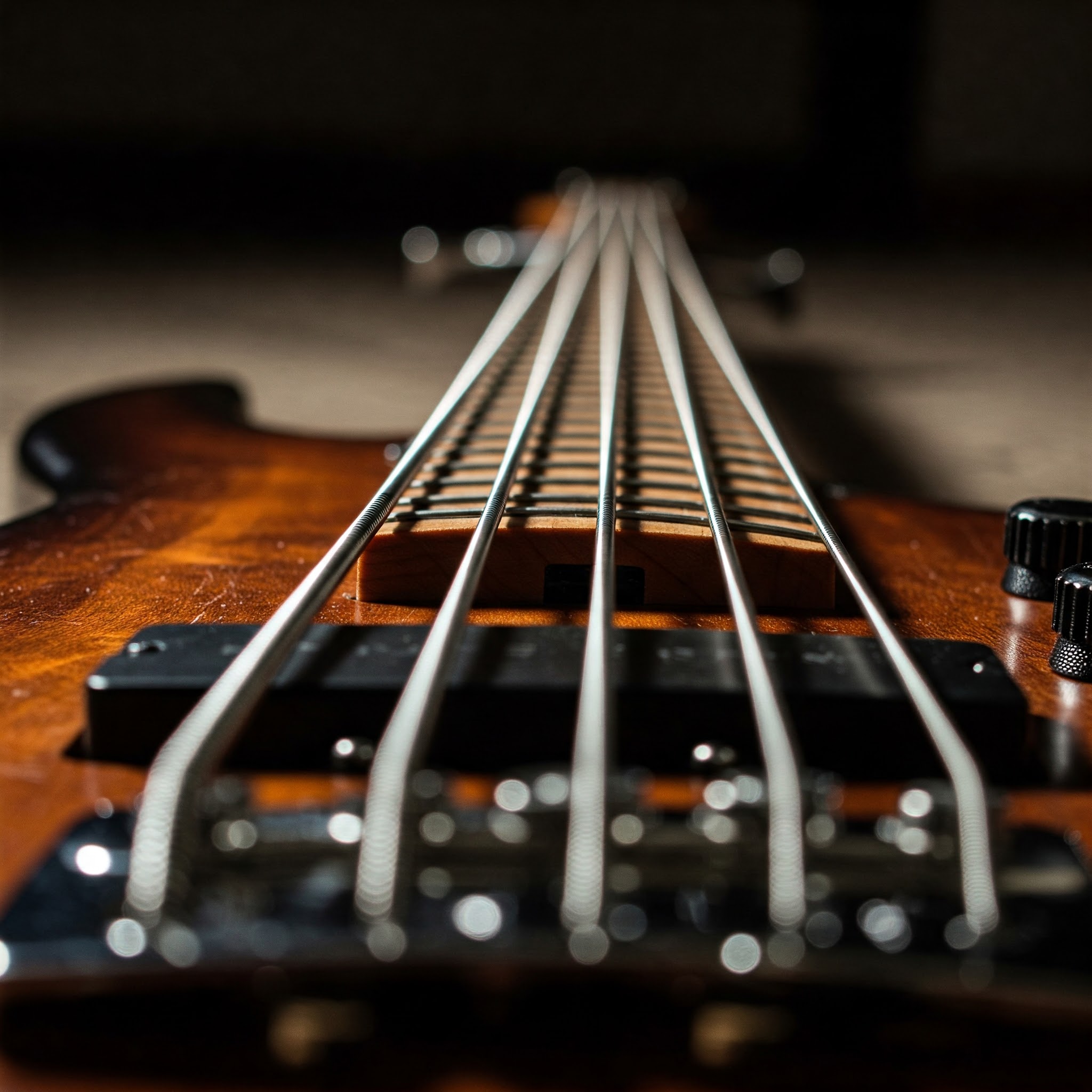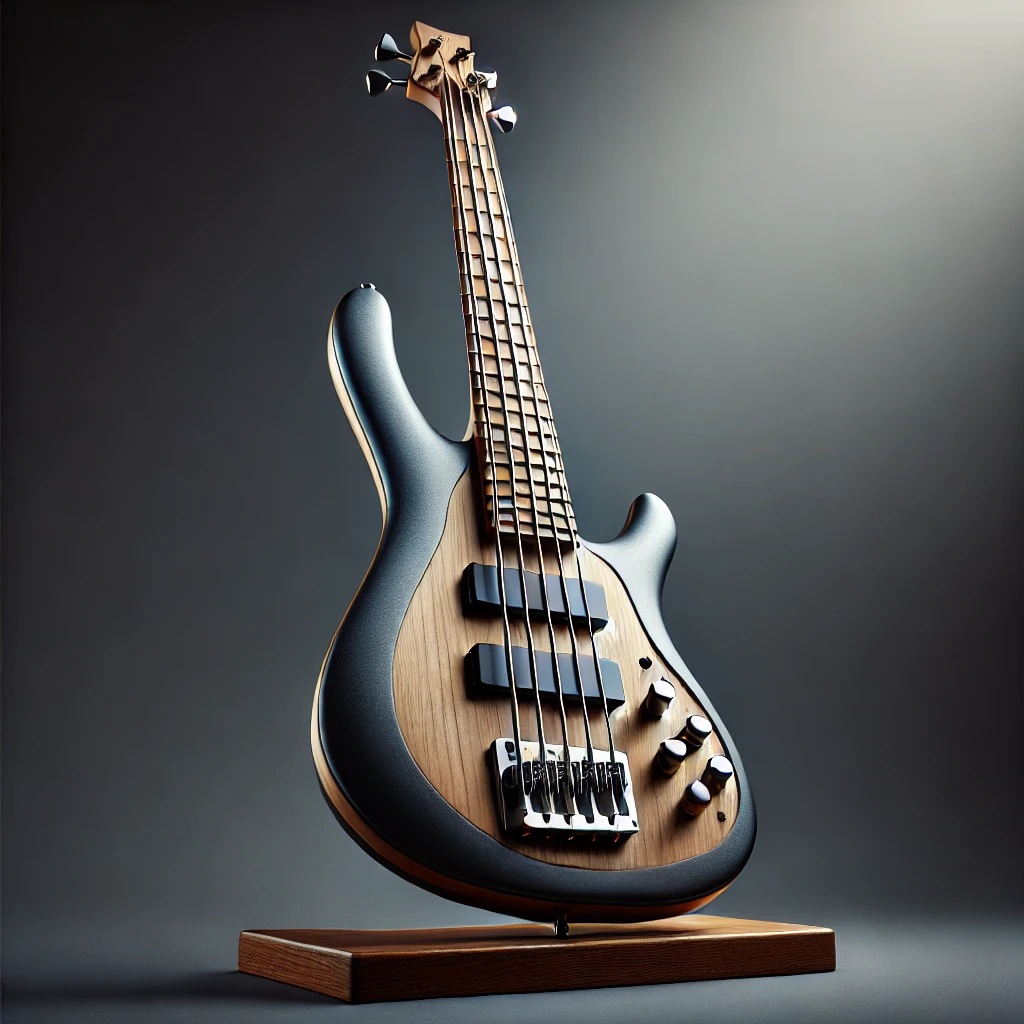The world of bass guitars has evolved dramatically since the introduction of the electric bass in the 1950s. Among the many innovations that have expanded the sonic possibilities for bassists, the 12 string electric bass stands out as one of the most fascinating and powerful. This unique instrument, featuring six pairs of strings instead of the traditional four individual strings, offers players an incredibly rich, full sound that can transform any musical composition.
✨Was this helpful? Spread the word! 🚀
When you first hear a 12 string electric bass, the immediate impression is often one of wonder – how can a bass guitar produce such a lush, almost orchestral sound? The answer lies in its innovative design and string configuration, which creates a natural chorus effect and harmonic complexity that’s impossible to achieve with standard bass guitars.
Comparing 12 String Electric Bass with Alternative Bass Types
| Feature | 12 String Electric Bass | 4 String Bass | 5 String Bass | 8 String Bass |
|---|---|---|---|---|
| String Count | 12 (6 pairs) | 4 | 5 | 8 (4 pairs) |
| Tonal Range | Extremely wide with chorus effect | Standard | Extended low end | Wide with chorus effect |
| Neck Width | 2.5-3 inches | 1.5-1.75 inches | 1.75-2 inches | 2.25-2.75 inches |
| Complexity | High | Low | Medium | Medium-High |
| Weight | 9-12 lbs | 8-10 lbs | 9-11 lbs | 9-11 lbs |
| Price Range | $1,000-$5,000+ | $200-$3,000+ | $300-$4,000+ | $800-$4,000+ |
| Learning Curve | Steep | Gentle | Moderate | Moderate-Steep |
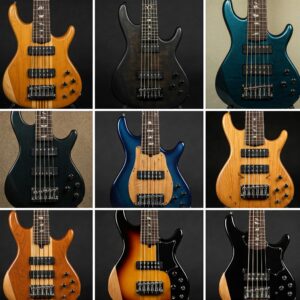
For bassists looking to expand their tonal palette beyond what traditional 4, 5, or even 6 string basses can offer, the 12 string electric bass represents an exciting frontier. Whether you’re a seasoned professional seeking new sounds or an adventurous intermediate player ready to explore uncharted territory, this comprehensive guide will walk you through everything you need to know about these magnificent instruments.
In this article, we’ll explore the history, construction, playing techniques, and top models of 12 string electric bass guitars. We’ll also provide detailed comparisons, maintenance tips, and recommendations to help you make an informed decision if you’re considering adding this versatile instrument to your collection.
The Evolution and History of the 12 String Electric Bass
The concept of doubling strings on stringed instruments dates back centuries, with 12-string acoustic guitars being perhaps the most familiar example. However, the application of this concept to the electric bass is a relatively recent innovation that has dramatically expanded the sonic possibilities available to bassists.
Early Development
The journey of the 12 string electric bass began in the late 1970s, but the instrument truly gained prominence when Hamer Guitars introduced the Quad Bass in 1979. This groundbreaking instrument featured eight strings (four pairs), with each standard string paired with an octave string. The design was revolutionary, offering bassists a new way to create rich, complex sounds.
Building on this innovation, luthier Carl Thompson created a custom 12 string electric bass for session legend Anthony Jackson in the early 1980s. This instrument, which Jackson called the “contrabass guitar,” featured six courses of strings (six pairs) and extended the range both higher and lower than a standard bass.
Rise to Prominence
The visibility and popularity of 12 string electric bass instruments increased significantly when renowned bassists like Doug Wimbish, John Paul Jones, and Tom Petersson began incorporating them into their performances. Petersson, the bassist for Cheap Trick, is often credited with popularizing the 12 string bass sound in rock music, using it to create massive, piano-like bass parts that filled out the band’s three-piece sound.
Modern Evolution
Today’s 12 string electric bass models have evolved considerably from those early prototypes. Modern manufacturers like Hamer, Alembic, F Bass, Warwick, and Ibanez have refined the design, addressing challenges related to string spacing, neck width, and electronics to create instruments that are both more playable and more versatile than their predecessors.
Contemporary 12 string electric bass guitars feature improved hardware, specialized pickups designed to handle the unique frequency range, and more ergonomic body shapes that help offset the additional weight of the extra strings and hardware.
Understanding the 12 String Electric Bass Construction
What exactly makes a 12 string electric bass different from its more common counterparts? Let’s break down the key components and design elements that define these instruments.
String Configuration
The defining characteristic of a 12 string electric bass is its string arrangement. Typically, it features six courses (pairs) of strings, with each course consisting of:
- A standard string tuned to a traditional bass note (E, A, D, G, C, F)
- A companion string tuned either:
- One octave higher (most common arrangement)
- The same pitch (less common, creates a 12-string guitar-like effect)
This configuration creates the instrument’s signature full, rich sound with natural chorusing and enhanced harmonic content.
Neck Design
To accommodate twice the number of strings found on a standard 6-string bass, 12 string electric bass instruments require specialized neck designs:
- Width: 12 string bass necks are significantly wider (typically 2.5-3 inches at the nut compared to about 1.5-1.75 inches on a 4-string bass)
- Reinforcement: Additional truss rods or carbon fiber reinforcement to handle the increased string tension
- Scale Length: Often slightly shorter than standard basses to improve playability given the wider neck
Body Construction
The bodies of 12 string electric basses must be designed to:
- Support the additional weight of extra hardware and strings
- Provide proper balance to prevent neck dive
- Include larger routing for more complex electronics
Many manufacturers use multi-laminate construction techniques with a combination of tonewoods to achieve both the necessary structural integrity and desired tonal characteristics.
Hardware and Electronics
12 string electric bass guitars typically feature:
- Heavy-duty bridges capable of handling 12 strings with individual saddle adjustment
- High-quality, high-ratio tuning machines for precise tuning
- Specialized pickups designed to capture both the fundamental notes and octave strings
- Versatile onboard preamps with EQ controls to shape the complex signal
The Distinctive Sound of 12 String Electric Bass
The sonic signature of a 12 string electric bass is immediately recognizable and offers several unique characteristics that set it apart from standard bass guitars.
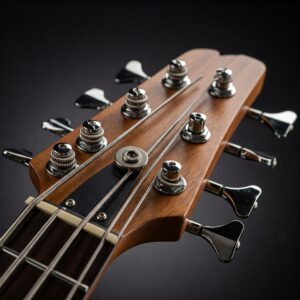
Natural Chorus Effect
The slightly different attack times and minor tuning variations between paired strings create a natural chorus or “shimmer” effect. This produces a sound that’s fuller and wider than what can be achieved with effects pedals on a standard bass.
Enhanced Harmonic Content
With octave strings adding higher frequency content, 12 string electric basses produce a more complex harmonic profile. This additional harmonic information helps the bass cut through dense mixes and fills more sonic space.
Piano-Like Qualities
Many players and producers describe the sound of a 12 string electric bass as having piano-like qualities, particularly in the attack and sustain characteristics. This makes the instrument particularly effective for solo bass performances or in sparse musical arrangements.
Tonal Versatility
Despite its distinctive voice, the 12 string electric bass offers remarkable versatility. By adjusting playing technique, pickup selection, and EQ settings, players can emphasize or de-emphasize certain aspects of the instrument’s sound to suit different musical contexts.
Playing Techniques for 12 String Electric Bass
Mastering the 12 string electric bass requires adapting conventional bass techniques to accommodate the instrument’s unique characteristics.
Right Hand Techniques
Playing a 12 string electric bass effectively requires specific right-hand approaches:
- Fingerstyle: Many players use standard two-finger technique but must be more precise to hit paired strings evenly
- Pick Playing: Some players prefer picks for more consistent attack across string pairs
- Thumb Technique: Slap techniques require modification but can produce powerful results
- String Dampening: Critical skill for controlling the additional resonance and sustain
Left Hand Approaches
The wider neck and paired strings also demand adjusted left-hand techniques:
- Modified Fingering: The wider neck requires greater stretching ability
- Pressure Control: Finding the right pressure to fret both strings in a pair evenly
- Position Shifts: Moving between positions requires greater precision
Special Techniques
Several techniques are particularly effective on 12 string electric bass:
- Harmonic Playing: Natural and artificial harmonics are especially rich on these instruments
- Chordal Approaches: The additional strings facilitate more complex chord voicings
- Tapping: Two-handed tapping techniques can create cascading, piano-like effects
Comparing Different 12 String Electric Bass Models
The market offers several distinctive approaches to 12 string electric bass design, each with their own strengths and characteristics. Here’s how the major models compare:
Comparison Table of Leading 12 String Electric Bass Models
| Model | Construction | Tonal Character | Scale Length | Weight | Price Range | Best For |
|---|---|---|---|---|---|---|
| Hamer Quad 12 | Mahogany body, maple neck | Warm, rich tone | 34″ | 10-11 lbs | $2,500-$4,000 | Rock, pop |
| Ibanez BTB1826 | Ash/maple body, 5-pc neck | Modern, precise | 35″ | 9.5 lbs | $1,500-$2,000 | Progressive, metal |
| Warwick Streamer Stageman | Swamp ash body, wenge neck | Punchy, aggressive | 34″ | 11 lbs | $2,800-$3,500 | Rock, funk |
| Alembic Further | Custom woods, neck-through | Hi-fi, detailed | 34″-36″ | 10-12 lbs | $8,000-$15,000 | Studio, fusion |
| F-Bass BN6-12 | Alder body, maple/walnut neck | Balanced, versatile | 34″ | 10 lbs | $4,000-$6,000 | Jazz, session work |
| Danelectro Hodad 12 | Semi-hollow, masonite | Retro, resonant | 30″ | 8 lbs | $700-$900 | Indie, alternative |
| Ernie Ball Music Man Bongo 12 | Basswood body, maple neck | Modern, balanced | 34″ | 10 lbs | $2,500-$3,000 | Modern rock, fusion |
| Schecter Studio-12 | Mahogany body, multi-laminate neck | Full, powerful | 35″ | 10.5 lbs | $1,200-$1,800 | Metal, prog rock |
| Dean Edge 12 | Basswood body, maple neck | Bright, articulate | 34″ | 9.5 lbs | $800-$1,000 | Entry-level, rock |
| Custom Fodera Imperial 12 | Master grade woods, custom specs | Elite, transparent | 33″-35″ | 9-11 lbs | $10,000+ | Professional, custom |
💬 Just one click – help others make better buying decisions too!😊
✨ Take Your Bass Playing to New Dimensions! ✨
➡ Don’t miss the opportunity to transform your sound with these exceptional instruments. Each 12 string electric bass featured in our guide offers unique advantages for different playing styles and budgets. Click on any highlighted model to check current prices and availability – your journey to massive, room-filling bass tones starts here!

Top 12 String Electric Bass Recommendations
Based on extensive research, player feedback, and technical specifications, here are our top recommendations for 12 string electric bass guitars across different price points:
Premium Tier ($4,000+)
Alembic Further 12 String
The Alembic Further 12 String represents the pinnacle of 12 string electric bass craftsmanship. Hand-built in California using premium tonewoods and proprietary electronics, the Further delivers unmatched tonal clarity and dynamic response. While the price tag is substantial (starting around $8,000), professional musicians and serious collectors appreciate the instrument’s flawless construction, incredible sustain, and versatile sound-shaping capabilities. The neck-through construction provides exceptional resonance and upper-fret access.
Alembic’s attention to detail extends to their custom-wound pickups and active preamp system, which allow players to dial in everything from thunderous lows to crystalline highs. Each Further is essentially a custom instrument, with options for exotic woods, inlay work, and electronics configurations.
F-Bass BN6-12
The F-Bass BN6-12 offers a more modern approach to 12 string electric bass design, with an emphasis on playability and tonal versatility. Made in Canada by a small team of dedicated luthiers, this instrument features a three-way adjustable neck system that allows players to fine-tune the action and string height to their preferences.
F-Bass’s proprietary dual-coil pickups and 3-band EQ provide exceptional tonal control, while the carefully selected tonewoods (typically alder body with maple and walnut neck) deliver balanced resonance across the frequency spectrum. At around $5,000, the BN6-12 represents a significant investment but offers professional quality and reliability.
Mid-Range Options ($1,500-$4,000)
Warwick Streamer Stage I 12
The Warwick Streamer Stage I 12 combines German engineering precision with aggressive tonal character. Warwick’s distinctive growl is well-suited to the expanded range of a 12 string electric bass, creating a sound that cuts through even the densest mix. The instrument features a swamp ash body, wenge neck, and Warwick’s MEC pickups and electronics.
Players appreciate the instrument’s rock-solid construction and versatility across genres, though some find the characteristic Warwick neck profile takes some adjustment. At approximately $3,000, this instrument represents a serious but attainable investment for committed players.
Ibanez BTB1826 Premium
The Ibanez BTB1826 Premium offers one of the best values in the 12 string electric bass market. Part of Ibanez’s Premium line, this instrument delivers professional features and construction quality at a more accessible price point (around $1,800). The multi-laminate neck provides exceptional stability, while the Mono-rail V bridge system allows precise intonation adjustment for each string.
The BTB1826 features Bartolini BH2 pickups and a 3-band EQ that provide impressive tonal flexibility. The 35″ scale length offers enhanced tension for low strings, which helps maintain clarity in the instrument’s lower register.
Entry-Level Options (Under $1,500)
Dean Edge 12
For players looking to explore the world of 12 string electric bass without breaking the bank, the Dean Edge 12 offers a solid entry point. Priced around $900, this instrument delivers the essential 12-string experience in a straightforward, reliable package. The basswood body and maple neck provide good tonal balance, while the DMT Design pickups offer decent versatility.
While it lacks some of the refinements of higher-end models, the Edge 12 is well-constructed and provides an accessible introduction to 12-string bass playing. It’s particularly popular among rock and metal players thanks to its aggressive styling and punchy sound.
Honorable Mention: Vintage Options
Hamer Quad 12 (Vintage)
For those who appreciate vintage instruments, finding a Hamer Quad 12 from the 1980s or early 1990s can be a rewarding quest. These instruments helped establish the 12 string electric bass category and offer a distinctive sound that many contemporary players still seek. Prices for well-maintained vintage examples typically range from $2,000-$3,500 depending on condition and specific features.
✨ Elevate Your Bass Arsenal Today! ✨
➡ Ready to transform your sound? The instruments highlighted above represent the best options in today’s market. Click on any product name to check current pricing and availability on Amazon. These carefully selected 12 string electric bass guitars will help you achieve those massive, room-filling tones that standard basses simply can’t deliver!
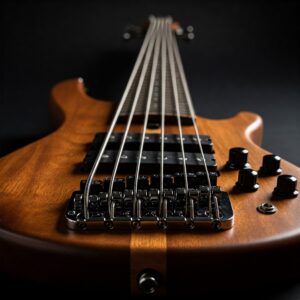
Practical Considerations for 12 String Electric Bass Players
Before investing in a 12 string electric bass, there are several practical considerations to keep in mind:
Weight and Physical Demands
12 string electric bass instruments are typically heavier than their standard counterparts, often weighing between 9-12 pounds. This added weight can be challenging during long performances, particularly for players with back or shoulder issues. Consider:
- Using a wide, padded strap
- Practicing proper standing posture
- Building up playing stamina gradually
- Exploring lightweight construction options if available
Amplification Requirements
The extended frequency range and output level of 12 string electric bass guitars often demand specialized amplification solutions:
- Power Requirements: Higher wattage amps (500W+) to handle the additional output
- Speaker Configuration: Full-range systems with good high-frequency response
- Preamp Features: Separate EQ control for different frequency ranges
- Compression: Light compression helps manage the dynamic peaks
Maintenance Challenges
Maintaining a 12 string electric bass requires additional attention compared to standard basses:
- String Changes: More time-consuming and expensive (specialized sets cost $50-$100)
- Setup Complexity: More points of adjustment for proper intonation
- Neck Relief: More critical due to the increased tension
- Hardware Maintenance: More tuning machines and bridge components to maintain
Playing Styles and Musical Contexts
The 12 string electric bass excels in certain musical contexts while presenting challenges in others. Understanding where these instruments shine can help players make the most of their unique capabilities.
Ideal Applications
12 string electric bass guitars are particularly effective in:
- Power Trios: Filling sonic space in three-piece bands
- Studio Recording: Adding depth and dimension to bass tracks
- Solo Bass Performance: Creating full, self-accompanying arrangements
- Ballads and Mid-Tempo Songs: Where the extended sustain and harmonic content can shine
- Progressive and Fusion Styles: Where tonal complexity is valued
Challenging Contexts
These instruments may be less ideal for:
- Fast Tempo Music: The additional strings can complicate rapid passages
- Styles Requiring Slap Technique: Though possible, traditional slap techniques require significant modification
- Bands with Dense Arrangements: Where the additional harmonic content might create muddy mixes
- Extended Live Sets: Due to the physical demands of the heavier instrument
Comparing the Benefits and Challenges of 12 String Electric Bass vs. Traditional Basses
Comparison Table: 12 String Electric Bass vs. Traditional Bass Options
| Aspect | 12 String Electric Bass | Traditional 4-String Bass | 5-String Bass | 6-String Bass |
|---|---|---|---|---|
| Tonal Fullness | Excellent (chorus effect) | Good (fundamental focus) | Good (extended range) | Very Good (extended range) |
| Harmonic Content | Very High | Moderate | Moderate | High |
| Playing Difficulty | High | Low | Moderate | Moderate-High |
| Genre Versatility | Moderate (specialized) | Very High (universal) | High (many genres) | High (many genres) |
| String Replacement Cost | $50-$100 | $15-$30 | $20-$40 | $25-$50 |
| Neck Width Comfort | Challenging for some | Comfortable for most | Moderate adjustment | Significant adjustment |
| Amplification Requirements | Specialized | Standard | Standard | Standard/Specialized |
| Visual Impact | High | Moderate | Moderate | Moderate-High |
| Recording Effectiveness | Excellent | Very Good | Very Good | Very Good |
| Maintenance Complexity | High | Low | Moderate | Moderate-High |
💬 Just one click – help others make better buying decisions too!😊
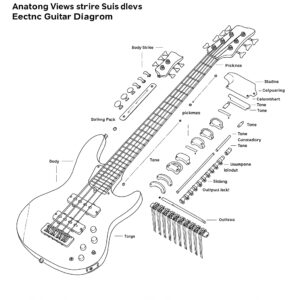
Famous 12 String Electric Bass Players and Their Techniques
Several influential bassists have helped define the possibilities of the 12 string electric bass through their innovative approaches and distinctive techniques.
Tom Petersson (Cheap Trick)
Often credited as one of the earliest adopters and popularizers of the 12 string electric bass, Petersson’s technique emphasizes:
- Strong, consistent picking for even string activation
- Midrange-focused tone that cuts through rock mixes
- Use of the instrument’s piano-like qualities to fill out the band’s three-piece sound
Petersson’s work on tracks like “I Want You to Want Me” and “Surrender” showcases the instrument’s ability to create massive, harmonic-rich bass parts that support both the rhythm and harmonic structure of the music.
Doug Wimbish (Living Colour, Tackhead)
Known for his innovative approach to bass playing, Wimbish incorporates:
- Advanced effects processing to enhance the 12 string electric bass’s natural chorus
- Tapping techniques that leverage the instrument’s harmonic capabilities
- Ambient textures using harmonics and volume swells
Wimbish’s work demonstrates the 12 string’s potential beyond conventional bass roles, creating soundscapes and textural elements that transcend traditional bass functions.
John Paul Jones (Led Zeppelin)
Though primarily known for his 4-string work with Led Zeppelin, Jones’s later career has included notable 12 string electric bass explorations featuring:
- Classical influence in finger technique
- Complex chordal work
- Integration with keyboard-based composition
Jones’s approach showcases the instrument’s versatility in more progressive and experimental contexts, particularly in his work with Them Crooked Vultures and his solo projects.
Jeff Ament (Pearl Jam)
Ament’s use of 12 string electric bass in Pearl Jam’s music demonstrates:
- Integration of the instrument within alternative rock contexts
- Balance between melodic playing and solid groove foundation
- Textural approaches that complement the band’s multiple guitar format
Tracks like “Jeremy” and “Even Flow” feature Ament’s 12 string work, adding depth and harmonic richness to the band’s sound without overwhelming the arrangement.
Maintenance and Care for Your 12 String Electric Bass
The additional complexity of 12 string electric bass guitars requires dedicated maintenance practices to ensure optimal performance and longevity.
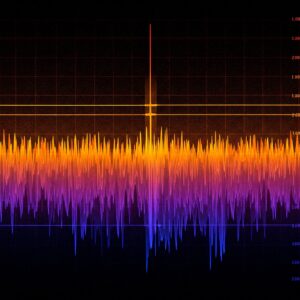
String Maintenance
Proper string care is particularly important for these instruments:
- Regular Cleaning: Wipe strings after each playing session to prevent corrosion
- Balanced Tension: Ensure octave strings and fundamental strings maintain proper relative tension
- Gradual Tuning: When changing strings, tune gradually to allow the neck to adjust
- String Rotation: Consider changing all strings simultaneously rather than individually
Neck Adjustment
The increased tension of 12 strings demands vigilant neck maintenance:
- Regular Truss Rod Checks: Monitor relief monthly or with seasonal changes
- Gradual Adjustments: Make small truss rod changes (1/8 turn maximum) and allow time for settling
- Professional Setup: Consider professional setup at least annually
- Humidity Control: Store the instrument in controlled conditions (45-55% relative humidity)
Electronics Care
The specialized electronics in 12 string electric bass guitars benefit from:
- Contact Cleaner: Regular application to potentiometers and switches
- Battery Management: For active systems, remove the battery when not in use for extended periods
- Connection Check: Periodically check output jack tightness
- Shielding Inspection: Ensure cavity shielding remains intact to prevent noise issues
String Selection and Setup Tips
Choosing the right strings and achieving optimal setup are crucial for getting the best performance from a 12 string electric bass.
String Selection Criteria
When choosing strings for a 12 string electric bass, consider:
- Tension Balance: Sets specifically designed for 12 string instruments provide balanced tension between fundamental and octave strings
- Material Options: Stainless steel, nickel, and coated strings offer different tonal characteristics and longevity
- Gauge Selection: Lighter gauges improve playability but may sacrifice some low-end definition
- Specialized Manufacturers: Companies like D’Addario, Rotosound, and GHS offer sets specifically designed for 12 string basses
Optimal Setup Specifications
A proper setup for a 12 string electric bass typically includes:
- String Height: Slightly higher action than a standard bass (approximately 2.5mm at the 12th fret for low E, graduating to 2mm for high C)
- Neck Relief: Moderate relief (approximately 0.3mm at the 7th fret with strings fretted at the 1st and last frets)
- Intonation: Precise adjustment for each individual string
- Pickup Height: Balanced to compensate for the different output levels of fundamental and octave strings
- Bridge Saddle Staggering: Configured to match the fingerboard radius
Recording and Amplifying Your 12 String Electric Bass
Capturing the full sonic potential of a 12 string electric bass requires specific approaches to both recording and live amplification.
Recording Techniques
In the studio, consider these approaches:
- Dual Signal Path: Split the signal to capture both clean fundamental tones and processed harmonic content
- Compression Settings: Gentle compression (2:1 ratio, slow attack) to manage dynamic range without squashing character
- EQ Approach: Subtle high-mid boost (around 2-3kHz) to enhance string definition
- Microphone Options: For amplifier recording, large-diaphragm condensers capture the full frequency spectrum effectively
- Direct Recording: High-quality DI boxes with transformer isolation preserve transient response
Live Sound Solutions
For live performance, these strategies help translate the instrument’s complex sound:
- Bi-amping: Separate amplifiers for low and high-frequency content
- Specialized Preamps: Units with parallel processing paths for different frequency ranges
- Strategic Compression: Multi-band compression to control different frequency ranges independently
- In-Ear Monitoring: Helps players hear the full frequency spectrum in loud stage environments
- Graphic EQ: Precise control to prevent specific frequencies from dominating
✨ Take Your Bass Playing to New Dimensions! ✨
➡ Don’t miss the opportunity to transform your sound with these exceptional instruments. Each 12 string electric bass featured in our guide offers unique advantages for different playing styles and budgets. Click on any highlighted model to check current prices and availability – your journey to massive, room-filling bass tones starts here!

Conclusion: Is a 12 String Electric Bass Right for You?
The 12 string electric bass represents one of the most specialized and sonically powerful tools in the bassist’s arsenal. Its unique capabilities offer specific advantages for certain players and musical contexts, but also come with practical considerations that may not suit everyone.
You might consider a 12 string electric bass if:
- You’re seeking to expand your sonic palette beyond what conventional basses offer
- You play in musical contexts where fuller, more harmonically rich bass sounds would enhance the composition
- You’re interested in solo bass performance or situations where the bass needs to fill more sonic space
- You have the technical foundation and patience to adapt to the instrument’s learning curve
- You’re willing to invest in the specialized equipment needed to properly amplify and maintain the instrument
The 12 string electric bass isn’t simply a bass with more strings – it’s a distinct instrument with its own voice, technical approach, and musical applications. For those willing to explore its unique capabilities, it offers sonic possibilities that no other bass guitar can match.
As with any specialized instrument, the key is to understand both its strengths and limitations, and to find the musical contexts where its distinctive voice can truly shine. Whether you’re a professional bassist looking to expand your tonal options or an adventurous player seeking new creative territory, the 12 string electric bass offers a fascinating world of expanded sonic possibilities.
More FAQs
❓ What makes a 12 string electric bass different from a regular bass?
✅ A 12 string electric bass features six pairs of strings instead of individual strings found on regular basses. Each pair typically contains a standard string and an octave string tuned higher, creating a rich, piano-like sound with natural chorus effect. The instrument produces significantly more harmonic content, wider frequency range, and greater tonal complexity than standard 4, 5, or 6 string basses...
❓ How much does a quality 12 string electric bass cost?
✅ Quality 12 string electric bass guitars range from $800-$15,000 depending on construction and features. Entry-level models from manufacturers like Dean start around $800-$1,200, while mid-range options from Ibanez and Schecter fall between $1,500-$3,000. Professional instruments from Warwick and F-Bass cost $3,000-$6,000, while custom shop and boutique models from Alembic and Fodera can exceed $10,000...
❓ Are 12 string electric basses harder to play than regular basses?
✅ Yes, 12 string electric basses present a steeper learning curve due to wider necks (2.5-3 inches vs 1.5-1.75 inches on 4-strings) and paired-string configurations. Players need greater left-hand stretching ability, more precise right-hand technique to strike string pairs evenly, and different approaches to techniques like slapping. Most experienced bassists need 3-6 months to develop comfort and facility on 12 string instruments...
❓ What's the best amplifier setup for a 12 string electric bass?
✅ Full-range, bi-amped systems provide optimal amplification for 12 string electric basses. The extended frequency response needs powerful low-end reproduction (500W+ power amp) plus clear high-mid reproduction for the octave strings. Professional bassists often pair a traditional bass cab (like 4×10 inches or 1×15 inches) with a mid/high component (like a 2×10 inches with tweeter) using separate power amps for each frequency range...
❓ What genres of music are 12 string electric basses best suited for?
✅ 12 string electric basses excel in progressive rock, jazz fusion, studio recording, and power trio formats. The rich harmonic content makes them ideal for bands with keyboard-like bass textures, complex harmonic structures, or sparse arrangements where the bass needs to fill more sonic space. They're particularly valuable in smaller ensembles where bassists need to cover both harmonic and rhythmic roles simultaneously...
Recommended for You
- 10 Best 8 String Electric Bass Options for Serious Musicians in 2025
- 10 Best La Bella Bass Strings for Incredible Tone and Durability in 2025
- 10 Exceptional Elixir Bass Strings for Transformative Tone Quality in 2025
Disclaimer: This article contains affiliate links. If you purchase products through these links, we may earn a small commission at no additional cost to you.
✨ Found this helpful? Share it with your friends! 💬🤗



